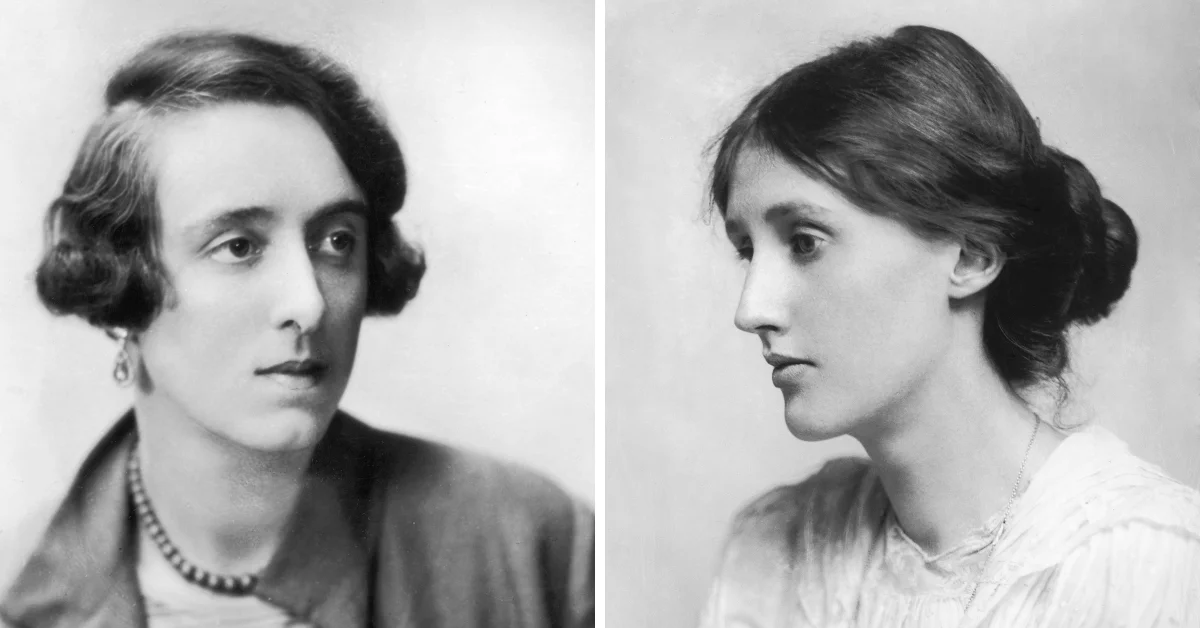Welcome to my Blog,
This blog is part of our study. This Thinking activity is based on Virginia Woolf’s Orlando - A Biography was assigned by Megha ma'am Department of English MKBU. In this task, we have to answer some questions mentioned in this blog. https://vaidehi09.blogspot.com/2022/01/movie-screening-vita-and-virginia-by.html and write our own views on Orlando and Vita and Virginia movies in this blog.
Introduction of Writer:
Virginia Woolf
Also Known as - Adeline Virginia Woolf/Stephen
Born - 25 January 1882
Death - 28 March 1941 (aged 59)
Occupation/Known as - Novelist, essayist, publisher, critic
Virginia Woolf (1882-1941) was an English writer and one of the foremost modernist writers of the 20th century. She was known for her experimental style, which often explored themes of gender, sexuality, identity, and mental health. Woolf is best known for her novels, including "Mrs. Dalloway," "To the Lighthouse," and "Orlando," as well as her non-fiction works, such as "A Room of One's Own."
Woolf was a member of the influential Bloomsbury Group, a circle of writers, artists, and intellectuals who were known for their bohemian lifestyles and unconventional ideas. Woolf's work is characterized by its stream-of-consciousness narrative style, its emphasis on the interior lives of her characters, and its innovative approach to time and space.
Throughout her life, Woolf struggled with mental health issues, including depression and bipolar disorder. She ultimately died by suicide in 1941, at the age of 59. Despite her struggles, Woolf remains an important figure in modernist literature and her work continues to be studied and celebrated today.
Notable Works -
- Mrs. Dalloway (1925)
- To the Lighthouse (1927)
- The Voyage Out (1915)
- Jacob's Room (1922)
- Orlando (1928)
- The Waves (1931)
- Night and Day (1919)
1. How far do you feel that Orlando is influenced by Vita and Virginia’s love affair? Does it talk only about that or do you find anything else too?
It is widely known that Virginia Woolf's novel "Orlando" was inspired by her romantic relationship with Vita Sackville-West, and many aspects of the novel's plot and characters are thought to be based on their personal experiences. In particular, the character of Orlando is believed to be a composite of Woolf and Sackville-West, with elements of both writers' personalities and lives.
However, "Orlando" is not simply a retelling of Woolf and Sackville-West's love affair. The novel explores a range of themes and issues beyond their relationship, including gender identity, time, history, and literature. The book is a meditation on the nature of identity itself, as Orlando changes gender and experiences life in different historical periods while retaining a sense of continuity and selfhood throughout.
At its core, "Orlando" is a celebration of the power of the imagination and the creative spirit, as embodied by Orlando's artistic pursuits and Woolf's own literary experimentation. The book is a playful and experimental exploration of the nature of biography and history, challenging the reader's assumptions about the stability of identity and the fixity of historical narratives.
Overall, while "Orlando" may have been influenced by Woolf and Sackville-West's relationship, the novel is a rich and complex work that explores a range of themes and issues beyond their personal lives.
2. Who do you think is confused about their identity Vita or Virginia? Explain with illustrations.
However, it is important to remember that identity is a complex and multifaceted concept, and there is no one "correct" way to experience or express one's sense of self. It is not productive or helpful to try to label or categorize individuals based on their sexuality or gender identity.
Ultimately, what is most important is that people are able to live authentically and express themselves in ways that feel true to who they are. As a society, we should strive to create a culture of acceptance and inclusivity, where everyone is able to live without fear of discrimination or prejudice.
3. What is society’s thought about women and identity? Do you agree with them? If Yes then why? If not then why?
For many years, women were denied access to education and opportunities for personal and professional development, which limited their ability to express themselves and pursue their goals. Women were often seen as secondary to men, and their identities were defined in relation to their roles as wives, mothers, and caretakers.
Thankfully, in recent years, there has been progressing in terms of gender equality and women's rights. Women have gained greater access to education, employment, and political representation, and there is a growing recognition of the importance of diversity and inclusion in all aspects of society.
However, despite this progress, there is still a long way to go before women's identities are fully valued and respected in all contexts. Women continue to face discrimination and marginalization based on their gender, race, ethnicity, and other factors, and there is a need for ongoing efforts to promote gender equality and women's empowerment.
What can we do for changing the rule for that type of society peoples?
Gender roles at home can and should be blurred. We should be teaching all our children to cook, clean, do laundry and fix things around the house – essential life skills for any adult. We should also be aware of cultural inconsistencies in how we treat girls and boys and the messages we are sending our daughters. We need to challenge cultural expectations that women should be responsible for things that men are not. Women are equally capable as men to be successful and happy. Our childhood upbringing and culture should reflect that.
Indian's Views on women and identity
More than half a century ago, India was one of the first countries in the world to elect a woman as prime minister, and the country currently has several highly influential women politicians, including Sonia Gandhi, the head of one of the major national parties. Today, most Indians say that “women and men make equally good political leaders,” and more than one-in-ten feel that women generally make better political leaders than men, according to a recent Pew Research Center survey of nearly 30,000 adults throughout India.
Most Indians (63%) see sons – not daughters – as being primarily responsible for parents’ last rites and burial rituals. Religious funeral practices for loved ones are widely seen as very important, and at least according to Hindu tradition, sons must perform last rites for a parent to ensure freedom for the soul in the afterlife. Recently, women – including actress Mandira Bedi and the daughters of India’s former Chief of Defense Staff – have publicly challenged these norms by lighting family members’ funeral pyres.
4. What are your views on Gender Identity? Will you like to give any message to society?
Gender is a composite of socially constructed roles, behaviors, activities and/or attributes that a given society may consider appropriate for people of an assigned sex. Gender identity, like gender, refers to an individual’s personal sense of being female, male, both, or anywhere along the gender spectrum. Gender identity may or may not correspond to the sex assumed or assigned at birth.
The following is a list of collectively used gender identities and expressions:
Agender: A person who identifies with this term will often consider themselves as not subscribing to any gender identity.
Cisgender: This term is commonly used to refer to people who identify exclusively with the gender assigned at birth.
Demigender: This is a term used to describe a person who feels a connection and/or has an internal leaning toward a particular gender.
Gender Questioning: Gender questioning describes someone who is questioning all or parts of their gender identity or expression and does not wish to identify themselves with a specific gender identity.
Intergender: Intergender describes a gender identity that is a mix of both masculine and feminine identities.
Multi-Gender: Multi-gender describes people who hold more than one gender identity.
Transgender/Trans: Transgender is used to describing any person who has a gender identity that is different from the gender they were assigned at birth.
5. Write a note on the direction of the movie. Which symbols and space caught your attention while watching the movie?
One notable aspect of the film's direction is its use of visual symbolism and metaphor. The film's surreal and dreamlike visuals are used to convey the fluidity of time and space, as well as the shifting nature of identity. For example, the use of mirrors and reflections throughout the film highlights the idea of duality and the reflection of one's inner self.
Another important element of the film's direction is its use of space and setting. The film is set in various historical periods, including Elizabethan England, the Victorian era, and the present day, and each period is depicted with great attention to detail and historical accuracy. The use of space and setting in the film is also used to convey the changing social and cultural attitudes towards gender and identity over time.
Overall, the direction of "Orlando" is marked by its bold and unconventional approach to storytelling, which is conveyed through its use of visual symbolism, metaphor, and attention to historical detail. The film's exploration of gender and identity remains relevant and thought-provoking, even decades after its initial release.
6. "Vita and Virginia" had to be made into Bollywood Adaptation, who do you think would be fit for the role of Vita and Virginia?
For the role of Vita, an actress with a strong screen presence and charisma would be needed. Some actresses who could potentially play this role include:
- Priyanka Chopra Jonas
- Kangana Ranaut
- Kareena Kapoor Khan
- Bhumi Pednekar
"Vita and Virginia" (2018) and "Orlando" (1992) are both based on literary works by Virginia Woolf and explore themes of gender identity and sexuality, as well as the lives of women in different historical eras. However, there are also some differences between the two films.












No comments:
Post a Comment